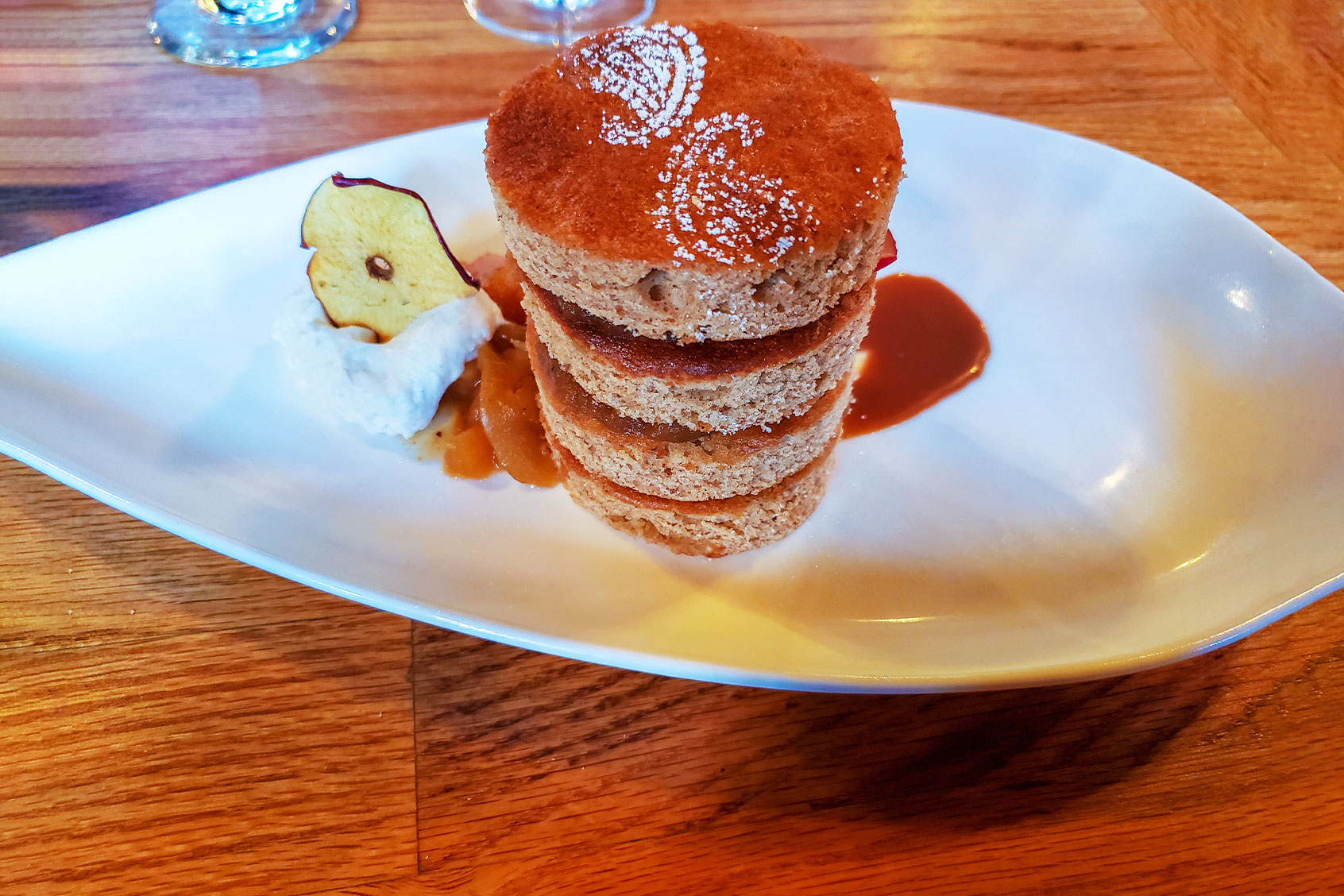Both the folklore and history behind Appalachian stack cakes have always been a little romantic to me. The traditional dessert looks like a sky-high pile of thick pancakes spread with even thicker apple filling. Sometimes, the top of the heap is dusted with stark white powdered sugar, rendering the cake an ideal mix of rustic and refined.
Legend has it that the first stack cakes were community affairs. Typically served at weddings, guests would supposedly each bring a “layer,” which was spread on-site with steaming dried-apple purée. The higher the cake, the more popular the bride.
Some regional scholars say this part of the legend may be something of a tall tale. Food writer Ronni Lundy, for instance, wrote for “Southern Living” that “all of the layers from the neighboring cooks, baked in pans and skillets of varying sizes, would have different diameters and thicknesses, so stacking a tall cake with even sides would be nearly impossible.”
However, as Lundy further wrote in her beautiful cookbook “Victuals,” the documented history of the stack cake and what it represents to the region is just as interesting.
“Sorghum-scented stack cakes filled with layers of cooked apples show up only in Appalachia and the Ozarks and some scattered pockets of the west where Appalachians migrated,” she wrote. “It appears to be a cake based on the Easter European tradition of tortes with many thin layers glued together by a sweet filling.”
According to Lundy, the dessert likely came to the region with the earliest immigrants from Germany. It became democratized, in a way, once on American soil.
“While European tortes were the purview of the rich and royalty — saturated with sugar, filled with egg, cream, fresh fruit and expensive chocolate — the Appalachian stack cake is almost austere, embellished only with cooked fried apples and whatever sweetener was easily at hand.”
Want more great food writing and recipes? Subscribe to Salon Food’s newsletter, The Bite.
It’s one of those recipes that truly becomes greater than the sum of its parts and is a clear demonstration of Appalachian resourcefulness. It makes me think of my dad’s mom — one of seven children — who grew up in West Virginia coal country. My grandmother went on to become a nurse at a 393-bed Catholic hospital in Huntington.
She met my grandfather while he was staying in one of those beds, hospitalized after an accident. They quickly and quietly married, a fact that she kept concealed from the nuns with whom she worked for some time. Decades later, when they were all in their seventies, my grandmother confessed her secret to one of the nuns, whose mouth stretched into a wry smile.
“We knew, Barbara,” she said. “Of course, we knew.”
It’s one of those recipes that truly becomes greater than the sum of its parts and is a clear demonstration of Appalachian resourcefulness.
I don’t think I’ve ever seen a photograph of my grandparents’ wedding. I’m not sure if there are any, but I’m sure that my grandmother would have been a beautiful bride (and I’m sure her bridal stack cake would have had many, many layers because she was so well-loved). She was, however, a beautiful homemaker.
My mom and I, who are both a little more laissez-faire in the kitchen, still lovingly joke about how organized Barbara was. Her spices were alphabetized, her cutlery all had to face the same direction in the drawer and her chocolate chip cookies were somehow all identical. If I didn’t know better, I’d think she spent decades placing the individual chocolate chips into dough with tweezers. That said, her kitchen still had the warmth of a set kitchen from “The Andy Griffith Show” — my grandfather’s favorite TV series.
Around this time of year every year, she would bring out her “fall things” for her kitchen: apple-shaped trivets and napkin rings; a hand-quilted table runner decorated with alternating Pink Ladies and Granny Smiths; and a bowl of fake, glossy apples. Ronni Lundy recommends making apple stack cake in a cast-iron skillet, one cake at a time. What I would give to be able to make one with my grandmother, trading whispers about my life and her life before me as we trade off making layers.
Read more
about fall cooking
Salon Food writes about stuff we think you’ll like. While our editorial team independently selected these products, Salon has affiliate partnerships, so making a purchase through our links may earn us a commission.


